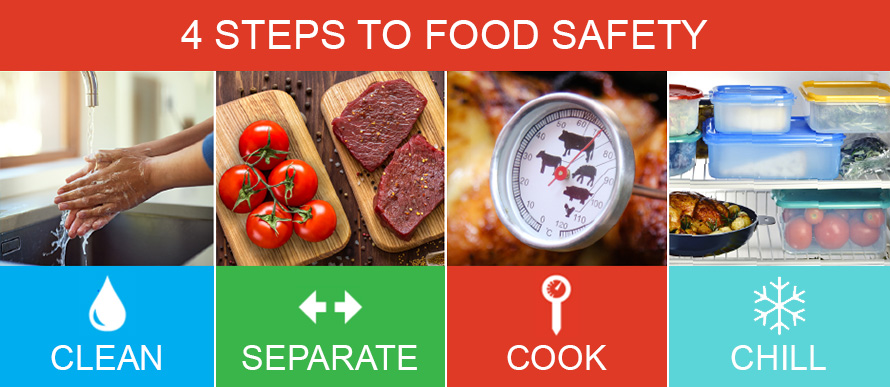Caring from the Kitchen: Food Safety
At Home with UAEX
Learn from the best Extension Educators on being at home with UAEX!
Caring from the Kitchen: Food Safety
by Katie Cullum
You've just had a baby or lost a loved one. Can you imagine someone asking "Can I bring you some freezer meals?" What would that feel like? I would feel so grateful! If you need more tips on helping others in challenging times, check out another blog post Caring from the Kitchen: Sharing Suppers.
Always remember food safety from the grocery store to the table or freezer.
Certain people are more likely to get sick or to have a serious illness with food poisoning or foodborne illness. People are risk include: Adults age 65 and older, children younger than 5 years, people whose immune systems are weakened due to illness or medical treatment, and pregnant women. Remember the four basic steps to food safety:
-
- Clean – wash hands and surfaces often
 Remember the four steps to food safety - Clean, Separate, Cook, Chill
Remember the four steps to food safety - Clean, Separate, Cook, Chill - Separate – separate raw meat and poultry from ready-to-eat food
- Cook – Cook food to the right temperature
- Chill – Chill raw meat and poultry, as well as cooked leftovers, promptly (within 2 hours)
For more details, check out the FoodSafety.gov website and get all the details on the 4 Steps to Food Safety.
- Clean – wash hands and surfaces often
- A freezer is not designed to hold food forever! While freezing foods at zero degrees F inactivates microbes, there are still other things like bacteria, that can be present in food. The longer food stays in the freezer, the more the quality goes down. Your food will always be safe at 0 degrees F but it may not taste the best after years in the freezer and so much freezer burn you don’t even know what it is! Label everything with the date and use within 3 months for best quality.
- Keep freezer space in mind. I have an upright freezer but another friend just has the freezer over her refrigerator. So she really has to watch what she prepares. For example, she may use more freezer bags that can be frozen flat and then stacked, rather than several casseroles in foil pans. If you’re planning on sharing meals, you may want to use freezer bags since you may not know about freezer space.
- Package it well. Proper packaging helps maintain quality and prevent that dreaded freezer burn. While space is a factor for some packaging, how you cook or prepare the food after thawing can also determine the packaging needed. You can use freezer bags (NOT storage bags), disposable foil pans, plastic containers or other safe freezer material. Don’t forget to label items with the date, a description of the food product, and cooking directions. You won’t remember all that later! If you are sharing the meal, the label is even more important. You may want to detail cooking directions, ingredients, and/or attach the recipe with freezer tape.
- Freeze it fast. Food will freeze more quickly if several smaller containers or packages are used instead of one large one. If you are packaging soup for a single, use smaller freezer bags rather than large ones. Never stack packages to be frozen; instead, spread them out in one layer on various shelves, then stack them after they have frozen solid.
